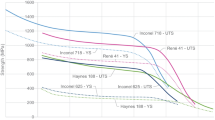Abstract
AA2195, an Al-Cu-Li alloy in the T8P4 age-hardened condition, is a candidate aluminum armor for future combat vehicles, as this material offers higher static strength and ballistic protection than current aluminum armor alloys. However, certification of AA2195 alloy for armor applications requires initial qualification based on the ballistic performance of welded panels in the as-welded condition. Currently, combat vehicle manufacturers primarily use gas metal arc welding (GMAW) process to meet their fabrication needs. Unfortunately, a matching GMAW consumable electrode is currently not commercially available to allow effective joining of AA2195 alloy. This initial effort focused on an innovative, low-cost, low-risk approach to identify an alloy composition suitable for effective joining of AA2195 alloy, and evaluated transverse-weld tensile properties of groove butt joints produced using the identified alloy. Selected commercial off-the-shelf (COTS) aluminum alloy filler wires were twisted to form candidate twisted filler rods. Representative test weldments were produced using AA2195 alloy, candidate twisted filler rods and gas tungsten arc welding (GTAW) process. Selected GTA weldments produced using Al-4wt.%Cu-2wt.%Si alloy as filler metal consistently provided transverse-weld tensile properties in excess of 275 MPa (40 ksi) UTS and 8% El (over 25 mm gage length), thereby showing potential for acceptable ballistic performance of as-welded panels. Further developmental work is required to evaluate in detail GMAW consumable wire electrodes based on the Al-Cu-Si system containing 4.2-5.0 wt.% Cu and 1.6-2.0 wt.% Si.

Similar content being viewed by others
Notes
Weldalite® is a Registered Trademark of Lockheed Martin Corporation.
Joint efficiency is a ratio of the UTS of the weld (as determined from a transverse-weld tensile test or an all-weld metal tensile test) to the UTS of the base metal. A joint efficiency less than 100% indicates an “undermatched” weldment, while a joint efficiency over 100% indicates an “overmatched” weldment. Commonly, most aluminum weldments are undermatched in the as-welded condition.
References
Cassada III and A. William, High Strength, High Toughness Aluminum-Copper-Magnesium-Type Aluminum Alloy, U.S. Patent 5,593,516, Jan 1997
T.D. Wolfe and S.A. Gedeon, “Weldability of 2219-T851 and 2519-T87 Aluminum Armor Alloys for Use in Army Vehicle Systems,” Report No. A692481, Material Technology Laboratory, Watertown, MA, June 1987
J.H. Devletian, S.M. DeVincent, and S.A. Gedeon, “Weldability of 2519-T87 Aluminum Alloy,” Report No. A915302, Material Technology Laboratory, Watertown, MA, Dec 1988
S.M. Grendahl, R.J. Squillacioti, D.J. Snoha, and C.E. Miller, “Mechanical and Ballistic Data for A12519 Plate, Forgings, and Weldments,” Report No. A704883, U.S. Army Research Laboratory, Aberdeen Proving Ground, MD, Apr 2001
Campbell, G., and Stotler, T. “Friction Stir Welding of Armor Grade Aluminum Plate”, Welding Journal, 78(12), 45–48, Dec (1999).
Nickodemus, G H; Kramer, L S; Pickens, J R; Burkins, M S. “Aluminum Alloy. Advances for Ground Vehicles”, Advanced Materials & Processes, 160 (2), pp. 51–54. Feb. (2002).
J.R. Pickens, F.H. Heubaum, L.S. Kramer, and K.S. Kumar, Ultra High Strength Weldable Aluminum-Lithium Alloys, U.S. Patent 5,032,359, July 1991
J.R. Pickens, F.H. Heubaum, and L.S. Kramer, Aluminum-Lithium Welding Alloys, U.S. Patent 5,122,339, June 1992
J.R. Pickens, T.J. Langan, F.H. Heubaum, L.S. Kramer, and A. Cho, Ultra High Strength Aluminum-Base Alloys, U.S. Patent 5,211,910, May 1993
J.R. Pickens, F.H. Heubaum, L.S. Kramer, and T.J. Langan, Ultra High Strength Al-Cu-Li-Mg Alloys, U.S. Patent 5,259,897, Nov 1993
T.J. Langan, J.R. Pickens, F.H. Heubaum, and L.S. Kramer, High Strength Al-Cu-Li-Zn-Mg Alloys, U.S. Patent 5,462,712, Oct 1995
Alcan Rolled Products (formerly Pechiney Rolled Products LLC), Ravenswood, West Virginia 26164
MIL-STD-1946, Welding of Aluminum Alloy Armor (Revision A), Appendix A – Ballistic Shock Test, 2004
A5.10 Specification for Bare Aluminum and Aluminum-Alloy Welding Electrodes and Rods, American Welding Society, Miami, FL, 1999
Alcotec Wire Corporation, http://www.alcotec.com/techpage.htm
The Lincoln Electric Company, http://content.lincolnelectric.com/pdfs/products/literature/c8100.pdf
R.A. Gentry and R.P. Martukanitz, Aluminum Base Copper-Lithium-Magnesium Welding Alloy for Welding Aluminum Lithium Alloys, U.S. Patent 4,848,647, July 1989
L.S. Kramer, J.R. Pickens, and C.E. Cross, Al-Cu-Li Weld Filler Alloy, Process for the Preparation Thereof and Process for Welding Therewith, U.S. Patent 5,512,241, Apr 1996
Philip, C., “Welding the Space Shuttle’s Al-Li external tank presents a challenge”, Welding Journal, 77(6), pp. 45–47, June (1998).
Pickens, J. R., “The Weldability of Lithium-Containing Aluminum Alloys”, Journal of Materials Science, vol. 20, pp. 4247–4258, (1985).
Sampath, K. “Tech Spotlight: Welding aluminum armor,” Advanced Materials & Processes, 163 (10), pp. 27–29, October (2005).
Dudas, J. H., and Collins, F. R. “Preventing weld cracks in high-strength aluminum alloys,” Welding Journal, 45(6), pp. 241s–249s, June (1966).
S. Kou, Welding Metallurgy, Wiley, 1987, p 249
S.R. Shah, J.E. Wittig, and G.T. Hahn, Microstructural Analysis of a High Strength Al-Cu-Li (Weldalite™ 049) Alloy Weld, International Trends in Welding Science and Technology, S.A. David and J.M. Vitek, Eds., ASM International, 1993, p 281–285
Guttierrez, A., and Lippold, J. C., “A proposed mechanism for equiaxed grain formation along the fusion boundary in aluminum-copper-lithium alloys”, Welding Journal Research Supplement, 77 (3), pp.123–132s, March (1998).
Acknowledgments
The author is pleased to acknowledge Bruce Williams, Gregory Brandon, Gregory Vidakovich, and Christopher Forcellini of Concurrent Technologies Corp., Johnstown, PA, for their technical support, and Tony Anderson of ESAB Welding and Cutting Products, Florence, SC, for the use of Fig. 1.
Author information
Authors and Affiliations
Corresponding author
Additional information
Gas tungsten arc weld produced using AA2195 as base metal and a new Al-4Cu-2Si alloy as filler metal provides acceptable transverse-weld tensile properties in the as-welded condition showing potential for exceeding the minimum ballistic performance requirements for welded aluminum armor.
Rights and permissions
About this article
Cite this article
Sampath, K. Transverse-Weld Tensile Properties of a New Al-4Cu-2Si Alloy as Filler Metal. J. of Materi Eng and Perform 18, 1218–1225 (2009). https://doi.org/10.1007/s11665-009-9371-4
Received:
Revised:
Accepted:
Published:
Issue Date:
DOI: https://doi.org/10.1007/s11665-009-9371-4




